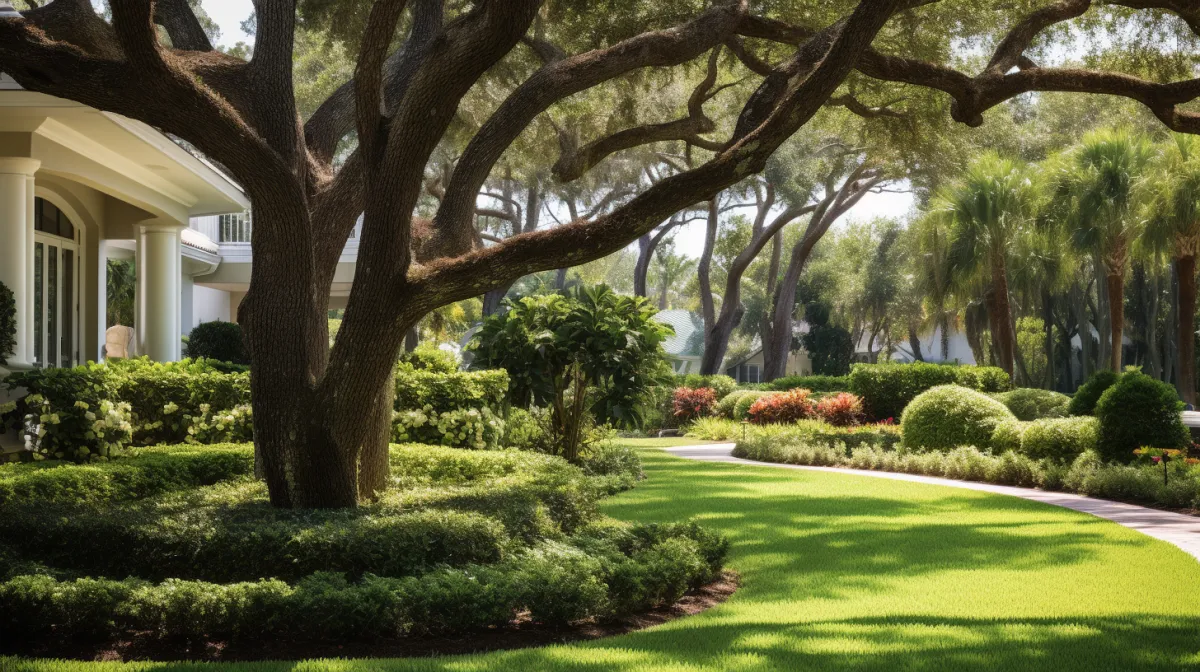
How Often Should You Trim Your Trees
Are you wondering how often you should trim your trees to keep them healthy and thriving?
Find out the benefits of regular tree trimming, signs that indicate it's time for a trim, and factors that determine the frequency. Discover the recommended trimming schedule for different tree types and get valuable tips for proper trimming techniques.
Don't neglect your trees - give them the care they deserve for a flourishing landscape.
Benefits of Regular Tree Trimming
To maintain healthy and thriving trees, regularly trimming them offers numerous benefits. By trimming your trees on a regular basis, you can ensure that they remain structurally sound and free from any potential hazards. Trimming helps to remove weak or dead branches that could pose a risk of falling and causing damage to your property or injuring someone. Additionally, regular trimming promotes proper growth and development of the tree by allowing more sunlight and air circulation to reach the inner branches and leaves. This helps to prevent diseases and insect infestations, as well as improve the overall appearance of the tree.
Regular tree trimming also enhances the safety of your property. By removing low-hanging branches or those that are close to power lines, you reduce the risk of accidents and power outages. Trimming trees away from your home or other structures can prevent branches from rubbing against the roof or walls, which can cause damage over time. Moreover, trimming trees near driveways or walkways can prevent them from obstructing the paths and causing potential accidents.
In addition to safety, regular trimming can also improve the aesthetic value of your landscape. By shaping and pruning your trees, you can create a visually appealing environment. This can enhance the curb appeal of your property, increase its value, and make it more inviting to visitors.
Signs That Your Trees Need Trimming
If you notice any of these signs, it's time to trim your trees. Regular tree trimming is essential for the health and appearance of your trees, as well as the safety of your property. Here are some signs that indicate your trees are in need of trimming:
Overhanging Branches: If you have branches that are hanging over your house, driveway, or walkways, it's time to trim them. These branches can pose a risk of falling and causing damage.
Dead or Diseased Branches: Dead or diseased branches not only detract from the beauty of your trees, but they can also spread disease to the rest of the tree. Trimming these branches will help promote healthy growth.
Interfering Branches: When branches start to rub against each other or grow too close together, they can cause damage and hinder the tree's growth. Trimming these branches will prevent them from interfering with each other.
Excessive Leaf Coverage: If your tree has a thick canopy that blocks sunlight and restricts air circulation, it's time to trim it. Trimming will help maintain a balanced and healthy tree.
Unbalanced Growth: When a tree has uneven growth, with branches growing more on one side than the other, it can become unstable. Trimming can help promote balanced growth and prevent the tree from leaning or toppling over.
Factors That Determine Trimming Frequency
Consider several factors when determining how often to trim your trees. The growth rate of your trees plays a significant role in deciding the frequency of trimming. Fast-growing trees, such as willows or poplars, may require more frequent trimming, possibly every 1-2 years, to keep them in shape. On the other hand, slower-growing trees, like oaks or maples, may only need trimming every 3-5 years.
The tree's age is another crucial factor to consider. Young trees generally require more frequent trimming to establish their shape and structure. Regular pruning during the early years helps promote healthy growth and ensures a sturdy framework. Once mature, the frequency of trimming can be reduced.
The tree's location and surroundings are also important. Trees near power lines or structures may need more regular trimming to prevent any potential hazards. Additionally, trees in urban areas may be exposed to pollution, which can affect their health and growth, requiring more frequent maintenance.
Lastly, consider the tree's overall health and condition. If a tree is damaged, diseased, or has dead branches, it may need immediate trimming regardless of the regular trimming schedule.
Recommended Trimming Schedule for Different Tree Types
Based on the factors mentioned earlier, you should now determine the recommended trimming schedule for different tree types. Proper trimming is essential in maintaining the health and appearance of your trees. Here are some guidelines to help you establish a trimming schedule for different types of trees:
Deciduous Trees: These trees lose their leaves in the fall. Prune them during late winter or early spring before new growth begins.
Evergreen Trees: These trees retain their foliage year-round. Trim them in late winter or early spring, just before the new growth starts.
Flowering Trees: To preserve their vibrant blooms, trim flowering trees immediately after the flowers fade.
Fruit Trees: Prune fruit trees during late winter or early spring to promote better fruit production and shape the tree.
Coniferous Trees: These trees include pine, spruce, and fir trees. Trim them during the dormant season, which is usually late fall or early winter.
Tips for Proper Tree Trimming Techniques: Why Professionals are a Necessity
To ensure proper tree trimming, it's crucial to use sharp, well-maintained pruning tools. Dull tools can lead to ragged cuts, which cause unnecessary stress and damage to the tree. However, even with the right tools, the complexity of the task is often underappreciated. This is why we highly recommend employing the expertise of professionals like SAS Tree Service for optimal results.
Professionals understand the importance of making clean cuts and can expertly trim just outside the branch collar — the swollen area where the branch joins the trunk. This precision promotes faster, healthier healing. Incorrect cuts, either too close or too far from the collar, can impede the tree's natural healing process, a common mistake for the untrained individual.
Moreover, identifying the right branches to prune is a skill in itself. The primary focus should be on removing dead, damaged, or diseased branches, which can compromise the tree's health and stability. Professionals from SAS Tree Service are adept at this, also knowing when to thin out crowded areas to enhance air circulation and sunlight exposure, vital for the tree's wellbeing.
It's important to note that an excessive removal of the tree's canopy can be detrimental. Amateurs often risk over-trimming, which weakens the tree, making it prone to pests and diseases. A professional service maintains the balance, ensuring no more than 25% of the canopy is removed in a single season. They also preserve the tree's natural aesthetics, regularly stepping back to assess and adjust their work. Thus, for the health and beauty of your trees, trusting professionals like SAS Tree Service over DIY methods is highly advisable.
Conclusion
In conclusion, regular tree trimming offers numerous benefits such as promoting tree health and safety, enhancing the aesthetic appeal of your landscape, and preventing potential damage. One interesting statistic to emphasize the importance of trimming is that properly pruned trees can live up to 20 years longer than trees that are not maintained. So, make sure to follow the recommended trimming schedule for your specific tree type to keep them thriving for years to come.
SAS Tree Service is a Fully Licensed and Insured, Family Owned Greater Gainesville Tree Service Company. We’re dedicated to providing our community with an outdoor area they’re proud to roam through.
Get a No-Obligation Free Estimate
Call Now (386) 454-5261

Get a No-Obligation Free Estimate
Call Now (386) 454-5261
Testimonials
Get In Touch
Email: [email protected]
Address
16908 NW US Hwy 441, High Springs, FL 32643
Office Hours
Mon – Fri 7:00am – 5:00pm
Sat, Sun – CLOSED
Phone Number:


